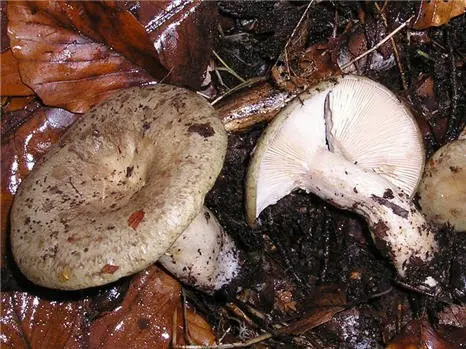Sticky Milkweed (Lactarius blennius)
- Division: Basidiomycota (Basidiomycetes)
- Subdivision: Agaricomycotina (Agaricomycetes)
- Class: Agaricomycetes (Agaricomycetes)
- Subclass: Incertae sedis (of uncertain position)
- Order: Russulales (Russulovye)
- Family: Russulaceae (Russula)
- Genus: Lactarius (Milky)
- Type: Lactarius blennius (sticky milkweed)
- Milky milky
- Milky gray-green
- Gray-green breast
- Agaricus blennius

milky sticky (lat. Lactarius blennius) is a mushroom of the genus Milky (lat. Lactarius) of the Russula family (lat. Russulaceae). It is sometimes considered conditionally edible and suitable for salting, but its possible toxic properties have not been studied, therefore it is not recommended to collect it.
Description
Hat ∅ 4-10 cm, convex at first, then prostrate, depressed in the center, with edges turned down. Its edges are lighter and sometimes covered with fluff. The skin is shiny, sticky, gray-green with darker concentric stripes.
The whitish flesh is compact but slightly brittle, odorless, with a sharp peppery taste. At a break, the fungus secretes a thick milky white juice, which becomes olive green when dried.
The plates are white, thin and frequent, slightly descending along the stem.
Leg 4-6 cm in height, lighter than the cap, thick (up to 2,5 cm), sticky, smooth.
Spore powder is pale yellow, spores are 7,5×6 µm, almost round, warty, veiny, amyloid.
Variability
The color varies from grayish to dirty green. The stem is solid at first, then becomes hollow. Whitish plates turn brown when touched. The flesh, when cut, acquires a grayish tint.
Ecology and distribution
Forms mycorrhiza with deciduous trees, especially beech and birch. The fungus is usually found in small groups in deciduous forests, often in mountainous areas. Distributed in Europe and Asia.









